Welcome to the landscape photography blog by Chuck Derus. Thanks for looking and for your comments!
River of Black Mud
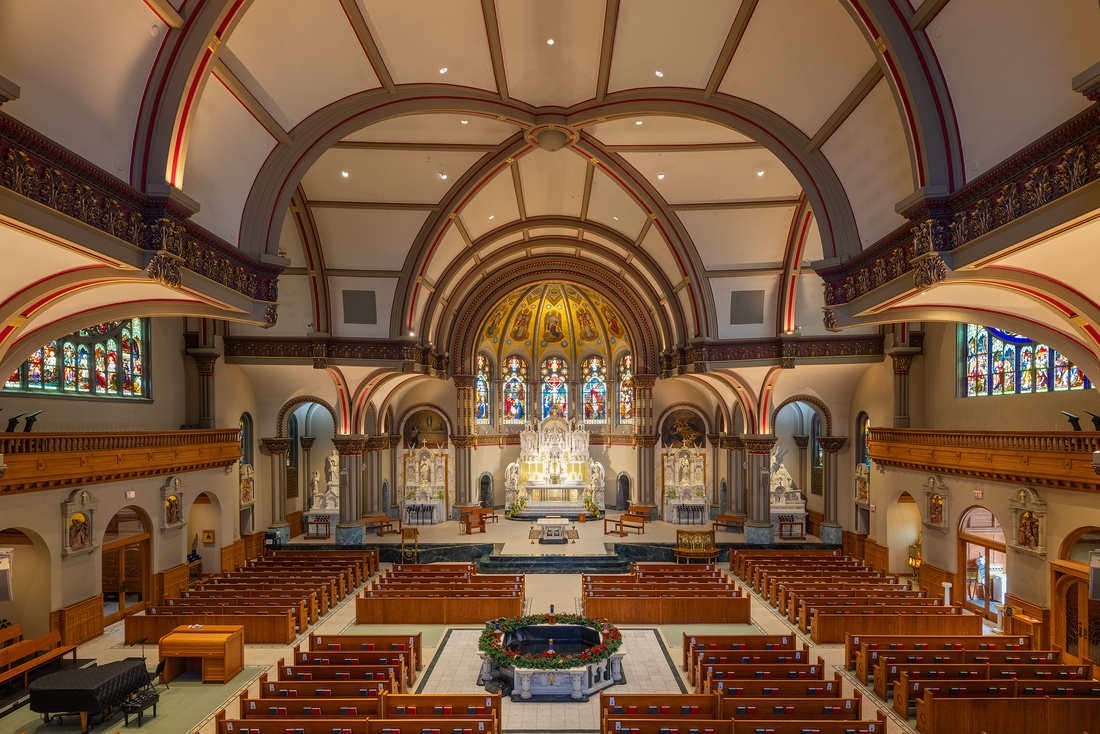

It was 1875. Chicago had been a city for only 38 years. The great fire was merely four years in the past.
That’s when a young priest first set his eyes upon the hardly recognizable intersection of Webster Ave. and Osgood St. (now Kenmore Ave.). It was the barely civilized fringe of Chicago. He saw truck farms, dirt streets that became rivers of black mud in the rain and the snow, and an occasional home breaking the monotony of a sweeping prairie.
Forty-one-year-old Rev. Edward Smith, C.M., had been summoned by the Bishop of Chicago to establish a new parish. He had $5,000 to purchase property and to build a new church. For almost a year, he used the small chapel at nearby St. Joseph Hospital to serve the 75 German and Irish Catholics in the area.
Working with parishioners, he purchased land and commissioned the construction of a small brick building on the corner of Webster and Osgood. On Christmas Day of 1875, they celebrated their first Mass together in the roofless building still under construction.
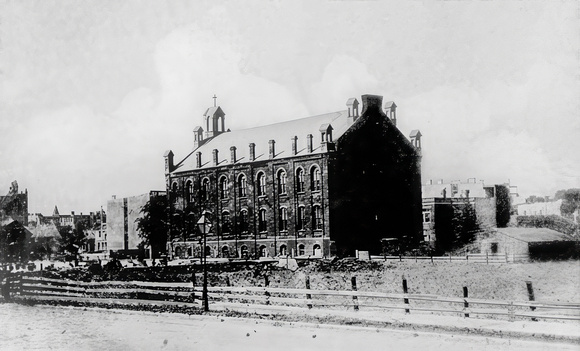

The original St. Vincent de Paul multipurpose building commonly known as “Father Smith’s Farm” from Then & Now · DePaul University 125 Anniversary
The top floor was the church. The first floor the pastor’s home, schoolrooms, and a parish hall. The building was finally finished and dedicated on April 30, 1876.
By 1891, the original building was clearly inadequate to meet the needs of a now booming neighborhood. Planning began for a magnificent replacement church.
It was slow going. The depression following the closing of the 1893 World’s Fair and concerns about the exact location of the elevated railway running from downtown to Wilson Avenue delayed progress.
When the new church was finally dedicated on May 2, 1897, there were few churches that could rival it in grace or architecture. That holds true today, as well.
One of its unique features is unobstructed sightlines. Normally, multiple columns are required for support. Steel supports reduced the number of columns to only four.
With the original building vacated, it was heavily remodeled along with the addition of a third floor. It became the home of the new St. Vincent's College in 1898. That school is now known as DePaul University.
On dedication day, the new church was very plain. The altars and floors were wooden, the walls were bare and most of the windows were plain glass.
It took 17 more years to furnish and decorate the church. Stained-glass windows came from Franz Mayer & Company of Munich, Germany. A first-class Lyon & Healy organ was installed. The High, Blessed Virgin, and St. Joseph Altars were built along with a marble altar rail. The sanctuary was tiled.


The Carrara marble High Altar
After fire destroyed a large portion of the church interior in 1955, the damaged south Rose window required replacement. The new 22-foot window was created by Conrad Schmitt Studios of New Berlin, Wisconsin. The theme is “Sun of Splendor.”


The Rose window replacement and some of the Lyon & Healy organ pipes.
The Shot
The Chicago Streets and Beyond Meetup photography group regularly sponsors photo walks and tours. Ever since my sister-in-law’s wedding there in 1995, I’ve wanted to return to admire its beauty. The Meetup on November 23 was that opportunity.
Thanks for looking and Happy New Year,
Chuck Derus
Winter Light
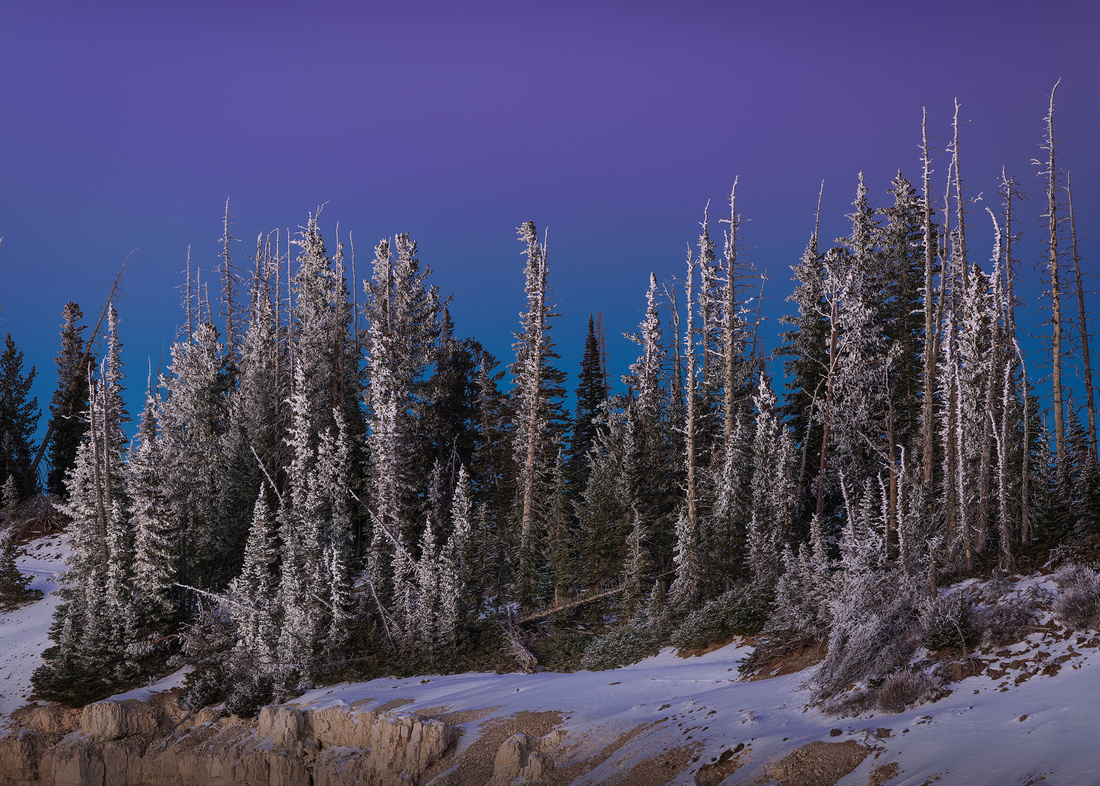

There’s something magical about the light in winter. Experiencing the edges of the day (sunrise and sunset) in cold weather imbues photographs with a sense of tranquility.
The winter sun’s position is much lower in the sky. This softens and diffuses the light, adding calm and serenity.
In addition, this is the season of cool tones. Blue colors contribute a captivating sense of depth and moodiness.
And snow further brightens compositions. Winter light captures the texture and intricate details of snow. During the “blue hour,” the sky takes on a deep blue color that contrasts beautifully with the pristine whiteness of snow.
Cedar Breaks
On October 30, I was visiting Cedar Breaks National Monument in Utah. The hoodoo rock formations in the park are like nearby Bryce Canyon National Park, but without the crowds.
The wild and rugged land of Cedar Breaks was known to early Mormon settlers as "Breaks," due to the difficulty of travel. President Franklin D. Roosevelt named Cedar Breaks a National Monument in 1933. The Monument is now managed by the National Park Service.
Given the name, you’d think the place is filled with cedar trees. But there isn’t one in sight. Instead, there are juniper trees that the early settlers mistook for cedars. This is a high elevation environment dominated by aspen and spruce. It’s also home to bristlecone pines, thought to be the oldest living thing in the world.
The single amphitheater is filled with the beautiful shapes and subtle colors of eroded limestone formations. Surrounding the amphitheater are high alpine meadows covered in wildflowers.
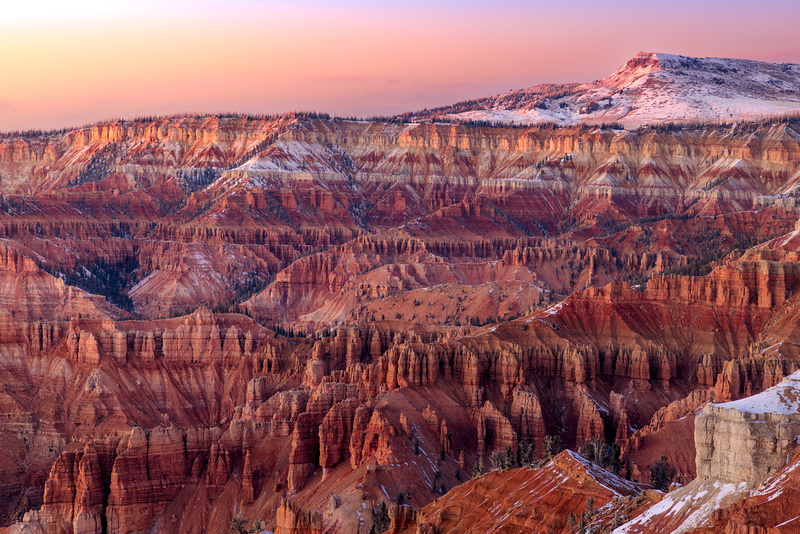

Twilight at the Cedar Breaks amphitheater
Because of its 10,000-foot elevation at the rim, snow often makes parts of the park inaccessible to vehicles from October through May. When I was there, the rim visitor center was closed, but the road hadn’t yet been closed for the season.
The Shot
On the afternoon of October 30, Steve Horne, Scott Fuller, and I dressed warmly in anticipation of single digit temperatures at the rim. Snow made the drive “interesting,” but not treacherous.
We started trekking to the bristlecone pines, but slippery conditions at the edges of the half-mile deep canyon caused us to pause at an overlook halfway there. From our vantage point, we could survey the entire amphitheater.
Just as the sun kissed the horizon, I took a picture of the amphitheater. Remembering the adage to “always look behind you,” I turned around.
Wow! Trees coated with rime ice glowed magically in the winter light. As I watched, an intense Belt of Venus rose behind the trees. The Belt’s arch of pinkish backscattered sunlight over the deep blue shadow of the earth created a perfect background. It was time to take a picture.
The trek back to our truck was cold, but exhilarating. We scraped the frost off the windows and drove back to Cedar City enjoying the simple pleasure of the truck’s heater.
Thanks for looking,
Chuck Derus
Swiftmas is Back!
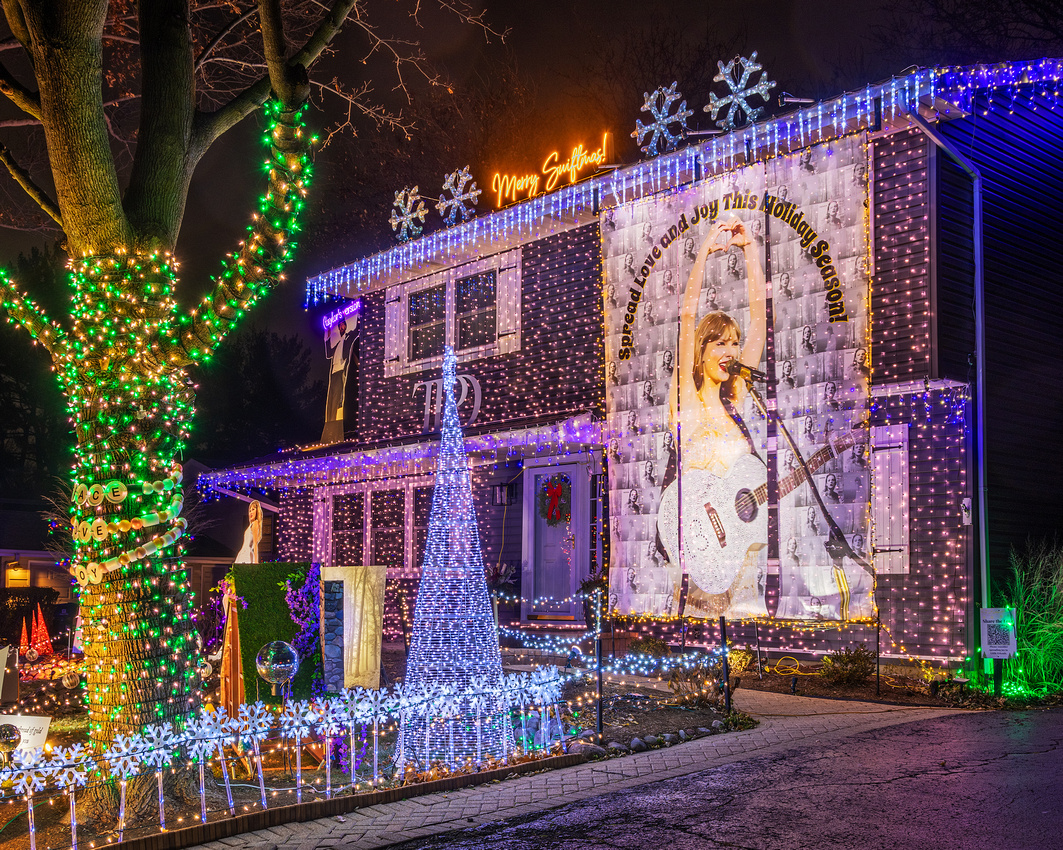

Swiftmas is Back!
This is number 17. Every year, Amy and Brian Scott up the ante and build upon their prior season’s Christmas lights display in Naperville, Illinois.
2023 was very special. Featuring superstar Taylor Swift, the nationally reported “Merry Swiftmas” theme delighted young and old alike. You can check out that first Merry Swiftmas on the blog at https://cderus.zenfolio.com/blog/2023/12/merry-swiftmas
The 2024 Taylor Swift sequel is even better. After an eight-month respite from last year’s display, the Scotts began planning for 2024. They started by writing a simple mission statement: spread love and joy to as many people as possible while maintaining grace with the larger neighborhood.
This season highlights three of Swift’s albums. The Tortured Poets, Reputation, and Folklore albums are front and center. For more information, check out the Chicago Tribune article at https://www.msn.com/en-us/entertainment/music/taylor-swiftmas-is-back-for-another-holiday-season-in-naperville/ar-AA1voUfS?ocid=BingNewsSerp
The Shots
I recently visited 1228 Atlas Lane in Naperville on a quiet weekday at dusk. Below are some of the sights that caught my eye. If you’re a local, I’d encourage you to visit. It’s an energizing outpouring of “love and joy.”
I especially enjoyed the Scott’s own Eras poster. It features sixteen years of their outdoor holiday decorations.
Happy Holidays, and thanks for looking,
Chuck Derus




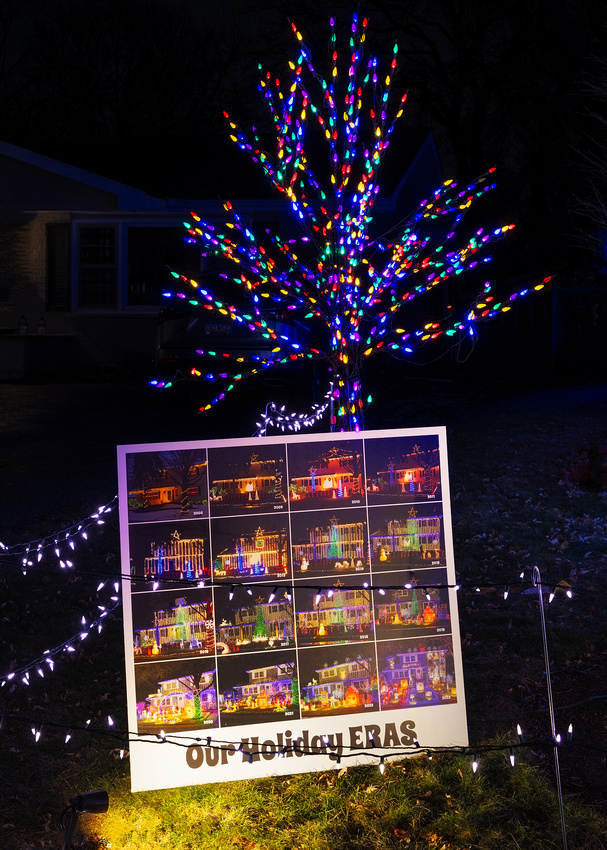

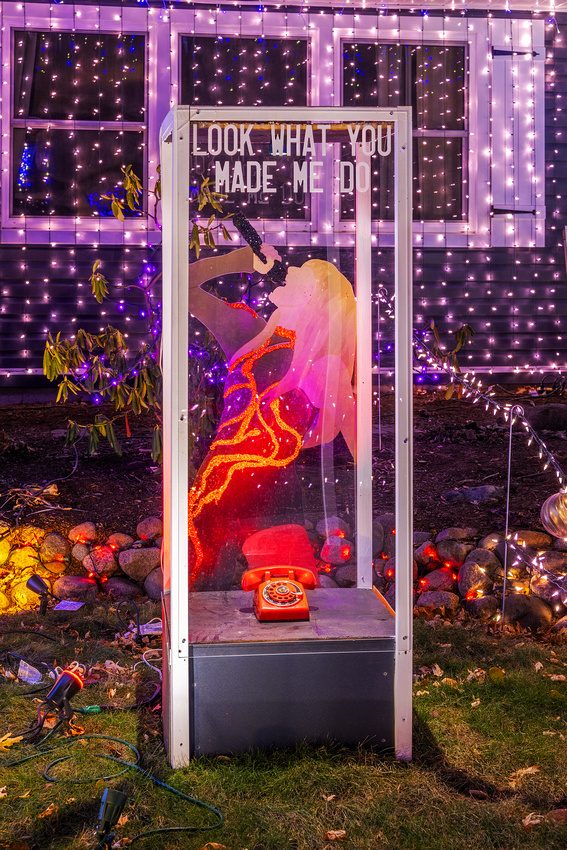

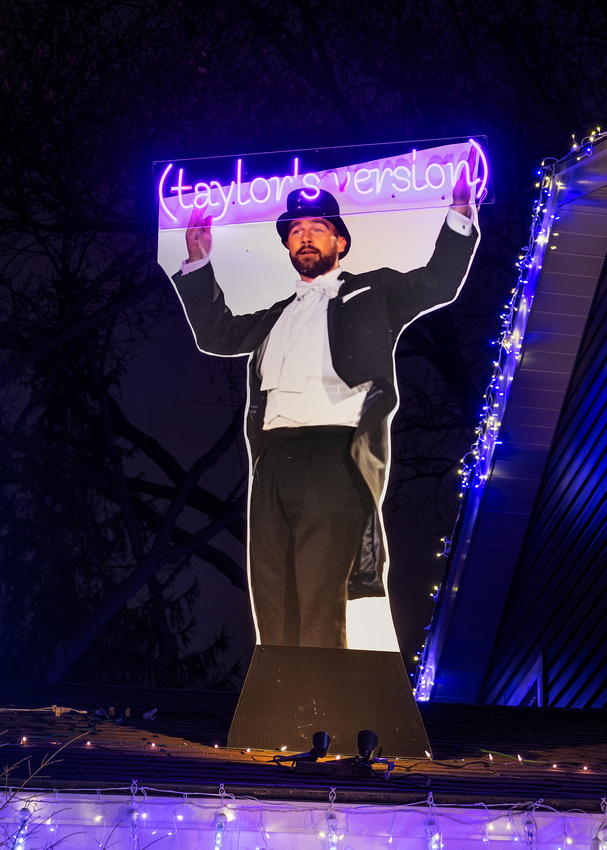



Embrace the Heritage


This sign is the signature feature of Mt. Carmel Junction, Utah. Located at the junction of Highway 89 and State Route 9, the Thunderbird Resort includes a restaurant, gift shop, hotel, RV park, and golf course.


You must be wondering about the slogan. How did “Home of the Ho-Made Pies” survive changing cultural norms? It helps to know the history of the Thunderbird’s founders Jack and Fern Morrison.
Jack Morrison was born in St. Louis, Missouri in 1891. His mother died when he was only eight. As a young man, Jack worked in the coal mines of Wyoming, one of the most dangerous jobs in the world. In 1917, he was drafted and fought in World War I.
Fern Hanson was born in 1907 to Danish immigrants in Bear River City, Utah. She grew up in a two-room log cabin on a farm with her eight siblings. The family moved to Soldier Summit and finally to Springville, Utah where she was a model for J.C. Penney.
A Springville friend set her up on a blind date with Jack Morrison. This was a “scandalous adventure” according to Fern. After a three-month courtship, they were married in October 1926.
The couple drove down Highway 89 until encountering State Route 9, a new road under construction to Zion National Park. Realizing the site’s potential, Jack used his veteran benefits to homestead 160 acres at the connection.
Jack and Fern built a small cabin just east of Highway 89 near the Virgin River. They started a family and improved the property. Soon, they built a gas station across the road for travelers along Highway 89 and State Route 9.
Fern began baking fruit pies and selling slices to truck drivers. In 1940, the couple decided to build the Thunderbird Cafe and Restaurant. Strapped for cash, Jack had to take a job with the railroad to make ends meet.
Their profits continued to go into improvements, including restrooms and a curio shop. At about this time, Jack came up with the famous “Pie Girl” icon modeled after Fern.


Ho vs Home
So why was it “Ho-Made” instead of “Homemade”? It was World War II and wood was scarce. Jack was forced to use scrap lumber for the sign. He just couldn’t find a long enough piece of wood for the extra two letters!
The folksy sounding shortened version was a winner. In recent years, however, the word has created controversy. But according to Fern, “…why not take the bull by the horns, embrace our heritage, and start merchandizing?”
Jack died in 1961, probably of black lung disease from his years in the coal mines. Fern decided to continue and expand the business with a nine-hole golf course. The potential for overnight visitors then led her to build a hotel.
Fern died in 1993. The Morrisons’ descendants still own and operate the restaurant, lodge, and golf course.
The Shot
Friends Steve Horne and Scott Fuller and I were on our way to a pre-dawn shoot in Zion National Park on October 28. But rain ruined our plans. Luckily, the route took us through Mt. Carmel Junction.
I’ve wanted to photograph this sign for fifteen years. But the parking lot has always been full of cars that ruin the shot.
This time there were no cars! Waiting for blue hour, we set up in a light rain to document this fascinating bit of Americana.
After that, it was time for breakfast at the Thunderbird!
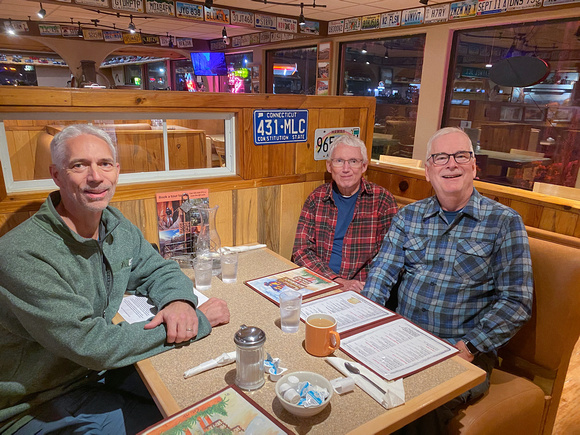

From left to right: Scott Fuller, Steve Horne, and me.
Thanks for looking,
Chuck Derus
The Moulton Barn


It’s everywhere. If you peruse any photo gallery, there will almost certainly be an image of the Moulton barn.
Who were the Moultons? Today’s Friday Photo and my Milky Way photo from three weeks ago featuring T.A. Moulton’s century-old barn piqued my curiosity.
Two barns remain on Mormon Row in the Grand Tetons. Thomas Alva (T.A.) Moulton and his brother John homesteaded adjacent parcels on Mormon Row in 1908.
They dry-farmed grain until irrigation ditches were built in the late 1920s. It was a hard life. A prolonged drought or a hailstorm could mean the difference between barely surviving and bankruptcy.
I wonder if they ever had the time to appreciate the magnificence of sunrise on the Grand Tetons.
All images from Media - Mormon Row Historic District


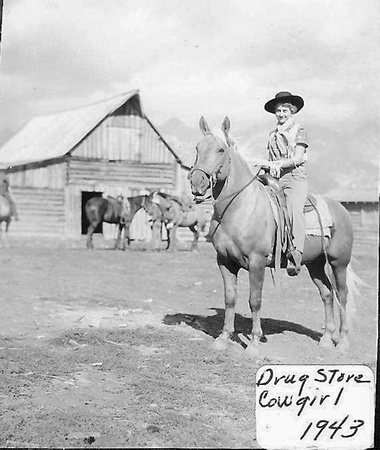

T.A. Branding Cattle Spouse Helen Moulton in Front of the Barn
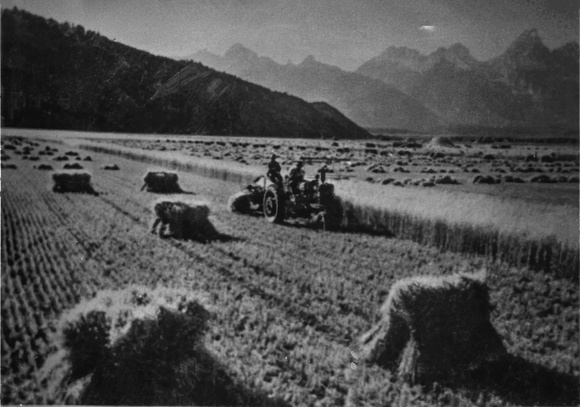

Grain Harvest
T.A. took over 30 years to build his gable-with-shed style barn. It is all that remains of the homestead T.A and his sons built between about 1912 and 1945.
Photographers from around the world flock to T. A. Moulton’s barn to capture this iconic, historic structure. The sunrise view with the barn in the foreground and the Teton Range as the backdrop is one of the most photographed locales in the valley.
The Shot
Given a choice, I prefer to photograph little known places. Does the world really need another photograph of the Moulton barn?
But icons are icons for a reason. It’s breathtaking to absorb the resplendence of the Grand Tetons warmly basking in the first light of the morning sun.
September 27 was one of those mornings to simply rejoice being there. The photograph was merely a feeble attempt to communicate my experience.
Fog lay across the valley beautifully softening and simplifying the background, except for the mountain peaks. At just the right moment, a Magpie alighted on the peak of the roof. It was time to capture the image.
After relishing the warm light of the sun kissing the mountaintops and my good fortune with the Magpie, it was back to the hotel to pack up and begin the long journey home.
I’m taking the Friday after Thanksgiving off, so the next Friday Photo is December 6.
Thanks for looking,
Chuck Derus